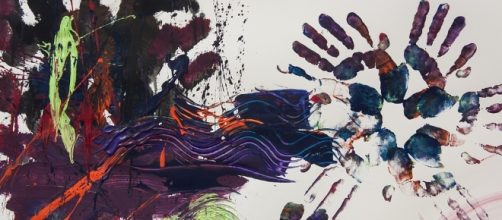Art therapy has been shown to be a wonderful outlet for stress and self-expression. It has been used for children who are in counseling to allow the therapist to connect with them and make interventions when necessary. There has been an increase in social activities that feature some form of art as a stress reliever, a social activity, a date night activity and so forth. Some of these include cooking, making posters, doing paintings, creating candles and so forth. A lot of these are used by persons on evenings and weekends as a stress reliever with friends and family.
But can art therapy be useful for adults during the therapeutic process? Why not? This form of therapy has been known to encourage growth and self-discovery. The person can create an object and then there is the journey to figure out what it means.
Benefits that can be derived from art therapy
A safe environment: The person works within a safe and supportive environment, guided by the therapist, where they can express themselves without fear of prejudice. It can help the person work through their emotions without feeling pressured and allow for the Healing Process to begin.
Builds Communication Skills: We often struggle in verbalizing how we may feel. This forum provides an avenue to such persons.
They can visualize how they feel and create something that represents those emotions. The meanings and interpretations can then be discussed. Sometimes, it even shows the person the depth of their own emotions.
Lightens the mood: It is a positive activity that can improve the mood of the person. They engage in enjoyable activities the person may have an interest in or always wanted to try. It is a good way to release energy the individual may have pent up. It allows the client to play and engage in relaxed activities.
The patient or client determines what activities they will engage in and the pace. It is about creating something new, making or building something, and being active. It will tap into the strengths of the person, highlighting what they can do.
Allows verbalization of what cannot be put into words: Art therapy allows the person to say what they may not be ready to say or do not know how to say. Everyone is capable of expression and this gives the person an avenue they can use to express the emotions they may be suppressing.
Increase self-esteem: Via the creation of something, anything, a clay mug, a painting, the skill level doesn’t matter, what matters is the feeling of accomplishment the person gains by completing a goal they set out for themselves. They have a visual representation of their personal strengths.
Diagnostic tool: Trained professionals will use pieces that persons create to diagnose certain mental illnesses or traumatic events.
There would be certain themes and elements in the pieces that the trained health care provider will be looking for, sometimes things the person may not know or cannot verbalize.
Art therapy and communication skills
Art therapy is useful for persons who have limited communication skills, who have suffered a traumatic experience and has challenges expressing such or who has suppressed the trauma of their experiences. It allows them to verbalize what they cannot verbalize. It is usually one tool that is used in addition to traditional forms of therapy and medication. At the foundation, it gives clients a coping mechanism they can utilize in their daily lives, even after therapy has ended.
Art therapy can come in many forms including dance, music, cooking, candle making, weaving, crocheting, and so on. It is also very good for relieving stress. Art therapy is very versatile and can be used by persons outside of the therapy setting.


